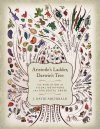![Aristotle's Ladder, Darwin's Tree Aristotle's Ladder, Darwin's Tree]()
Click to have a closer look
About this book
Contents
Customer reviews
Biography
Related titles
About this book
Leading paleontologist David Archibald explores the rich history of visual metaphors for biological order from ancient times to the present and their influence on human beings' perception of their place in nature. Specifically, Archibald focuses on ladders and trees, and the first appearance of trees to represent seasonal life cycles. Their use in ancient Roman decorations and genealogies was then appropriated by the early Christian Church to represent biblical genealogies. The late eighteenth century saw the idea of a tree reappropriated to visualize relationships in the natural world, sometimes with a creationist view, but in some instances suggesting evolution. Charles Darwin's On the Origin of Species (1859) exorcised the exclusively creationist view of the "tree of life." His ideas sparked an explosion of trees, mostly by younger acolytes in Europe.
Although Darwin's influence waned in the early twentieth century, by midcentury his ideas held sway once again in time for another and even greater explosion of tree building, generated by the development of new theories on how to assemble trees, the birth of powerful computing, and the emergence of molecular technology. Throughout his far-reaching study, and with the use of many figures, Archibald connects the evolution of "tree of life" iconography to our changing perception of the world and ourselves, offering uncommon insight into how we went from standing on the top rung of the biological ladder to embodying just one tiny twig on the tree of life.
Contents
Preface
Acknowledgments
1. Blaming Aristotle
2. The Roots of the Tree of Life
3. Competing Visual Metaphors
4. Deciphering Darwin’s Trees
5. The Gilded Age of Evolutionary Trees
6. The Waning and Waxing of Darwinian Trees
7. Three Revolutions in Tree Building
8. The Paragon of Animals
References
Index
Customer Reviews
Biography
J. David Archibald is professor emeritus of biology at San Diego State University as well as curator of mammals in the SDSU Vertebrate Collections. He has written or coedited more than 150 articles and 6 books, including The Rise of Placental Mammals: Origins and Relationships of the Major Extant Clades and Extinction and Radiation: How the Fall of Dinosaurs Led to the Rise of Mammals.
By: J David Archibald(Author)
242 pages, 94 b/w photos and illustrations
"J. David Archibald is one of the leading paleomammalogists in the world, and one of the foremost experts on the biotic changes across the Cretaceous-Tertiary boundary. In this book, he shows a deep understanding of the chronology and iconography of the 'tree' as both an iconic metaphor and a conceptual device in the history of biology."
– Kevin Padian, University of California, Berkeley
"This book presents a fascinating trip through the history of imagery and conceptual frameworks used to understand the diversity and evolution of life. J. David Archibald has produced an authoritative and delightful text that will be relished by anyone interested in evolution, biodiversity, the history and philosophy of science, scientific art, or graphic design."
– David M. Hillis, University of Texas at Austin
"Through the long history of drawings and diagrams, J. David Archibald's magnificent new book shows us how people have depicted the diverse interrelated array of life: from linear chains and ladders up through modern evolutionary trees. Archibald's work makes it clear that these relationships have been sensed regardless of the competing ideas of how the patterns were formed: whether through supernatural causes or natural evolutionary processes."
– Niles Eldredge, author of Darwin: Discovering the Tree of Life
"Aristotle's Ladder, Darwin's Tree provides a fascinating insight into the way biologists use diagrams to show the history of evolution. David Archibald documents the story of these pictures in an engaging and refreshing style, ranging from beautiful early manuscripts and frescoes that display religious and human genealogical relationships, to the most modern phylogenetic trees that appear in scientific journals and textbooks. A great book for a biologist!"
– Janet Browne, Harvard University
"Archibald's book is interdisciplinary, authoritative, well-written and complete, with a deep historiographic appreciation of its many subjects."
– Nature






















![Kame no Kōra wa Abarabone: Jintai de Arawasu Ugokumonozukan [Turtle Shells Have Ribs: A Picture Book of Animal Anatomy Represented by the Human Body]](http://mediacdn.nhbs.com/jackets/jackets_resizer_medium/24/249897.jpg?height=150&width=99)












